
As a true tropical paradise, Hawaii boasts some of the most unique bird species in the United States. From the native bird species specialized for island life to long-haul migrators just stopping by, Hawaii’s bird populations are highly varied and often surprising. We’ve put together the ultimate list of Hawaiian bird species, from the most interesting to the most common.
How Did Birds Get to Hawaii?
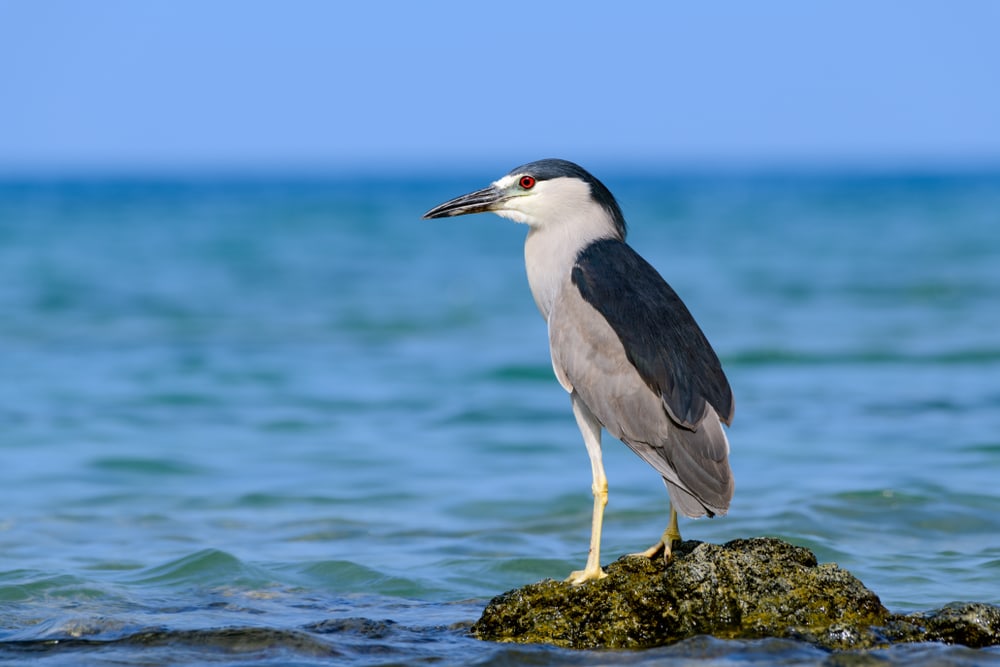
As a cluster of islands isolated in the Pacific Ocean, it’s actually quite interesting that Hawaii has developed a wide variety of bird species that call the islands home. It’s often uncommon for remote islands to have many bird species because it’s very difficult for new bird species to make it to the islands without assistance.
To be considered native, bird species would have to come to the Hawaiian Islands without human interference. This is quite a feat, considering the nearest landmass is about 3,000 kilometers away. According to scientists, the first native birds in Hawaii were members of the finch species. Finches migrate to new locations in large groups, and scientists believe the most likely explanation for Hawaii’s native birds involved storms at sea that carried flocks of birds by the wind.
Besides the species descended from finches, many bird species were brought to Hawaii on ships to control pests. This method of introducing species is fairly common when islands are colonized and extends beyond birds to include mammals and more.
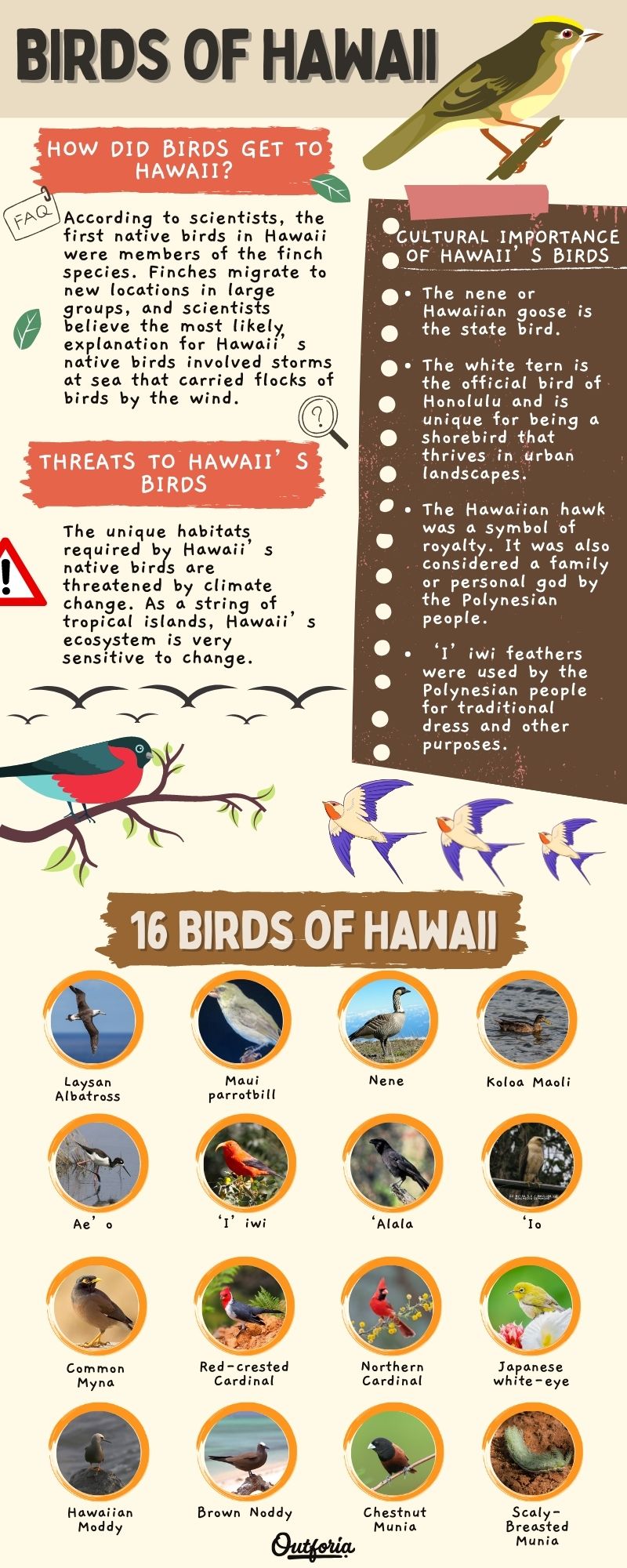
Share This Image On Your Site
<a href="https://outforia.com/birds-of-hawaii/"><img style="width:100%;" src="https://outforia.com/wp-content/uploads/2022/03/Birds-of-Hawaii-infographics-03102022.jpg"></a><br>Birds of Hawaii Infographic by <a href="https://outforia.com">Outforia</a>You May Also Like: Discover These 10 Sharks In Hawaii Complete with Photos, Infographics, Facts, and more!
Bird Species That Live in Hawaii

Now that we’ve covered how birds managed to get to Hawaii in the first place, let’s take a look at the bird species that can be found on the Hawaiian Islands. From the most interesting to the species now considered to be endemic (or found only in Hawaii), you’ll practically be an amateur ornithologist by the time we’re done.
Most Interesting Birds in Hawaii
1. Laysan albatross (Phoebastria immutabilis)
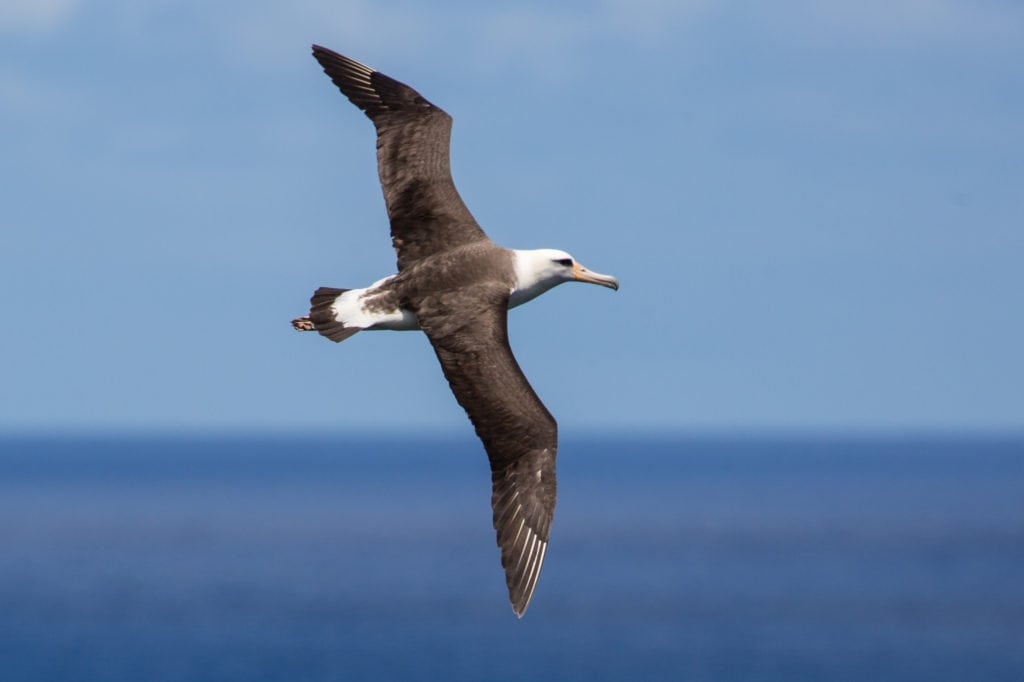
The largest bird found in Hawaii is the Laysan albatross (Phoebastria immutabilis). With a wingspan of approximately two meters and weighing up to four kilograms, the Laysan albatross is a very large seabird that is endemic to the Hawaiian Islands. While the Laysan albatross does migrate throughout the Pacific Ocean, 99% of the total population breeds within the state by building colonies of small nests in the sand. Laysan albatrosses don’t breed until they’re eight years old, and can breed annually after they reach maturity.
2. Maui parrotbill (Pseudonestor xanthophrys)
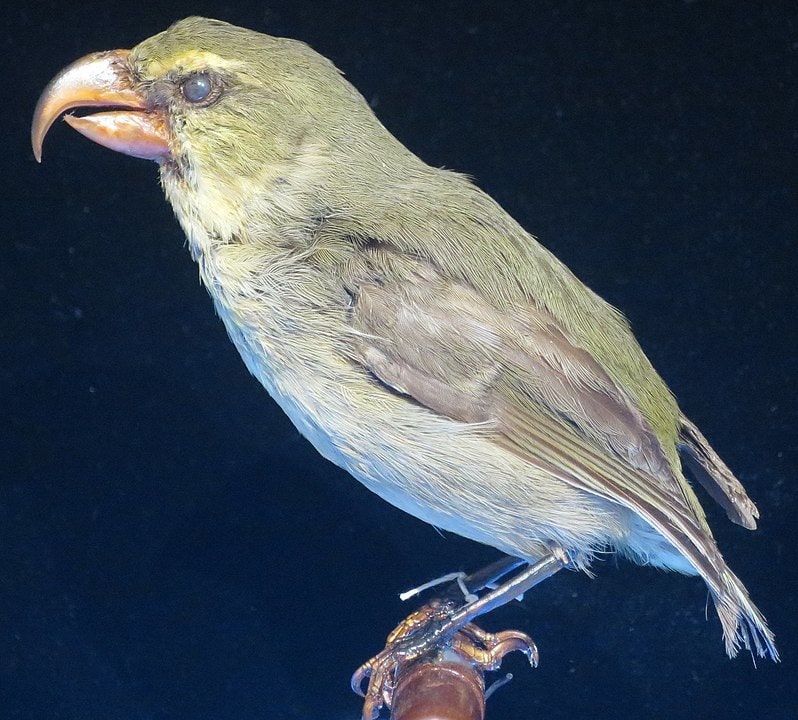
The rarest bird species in Hawaii is the Kiwikiu or Maui parrotbill (Pseudonestor xanthophrys). This parrot-like bird was declared dead by experts in 2019 but was sighted again on the Haleakala volcano in 2021, with current populations estimated to be below 300 individuals. The Maui parrotbill gets its name from its bill, which is shaped like a can opener in order to split and crush wood and twigs while searching for food.
Kiwikiu mate for life, living as long as sixteen years and producing a single chick every few years.
Bird Species Only Found In Hawaii
Now that we’ve learned about some of the most unique bird species found in Hawaii, let’s take a look at Hawaii’s endemic species. These bird species are only found in Hawaii and nowhere else in the world.
1. Nene (Branta sandvicensis)
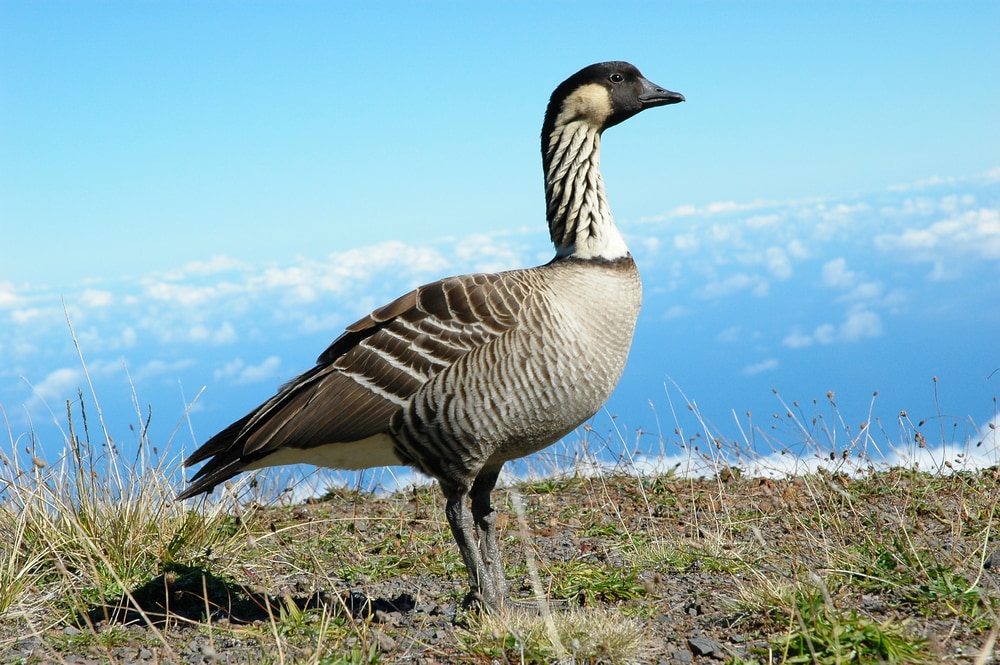
As Hawaii’s state bird, the nene is the only endemic goose species that can still be found in the state. Historically the nene was found on Kauai, Molokai, Maui, and the Big Island. Current nene populations are endangered due to development, agriculture, and invasive species, and are only found on the Big Island and Maui.
As the largest flightless bird in Hawaii, males and females are similar in size and coloring, growing to about 71 centimeters (28 inches) in length. Nene are grazers and browsers, eating mostly grasses, herbs, and berries. They breed during Hawaii’s wet season, from October to February. In captivity, nene can live up to twenty-four years. However, in the wild, an average lifespan is eight years.
2. Koloa Maoli (Anaz wyvilliana)
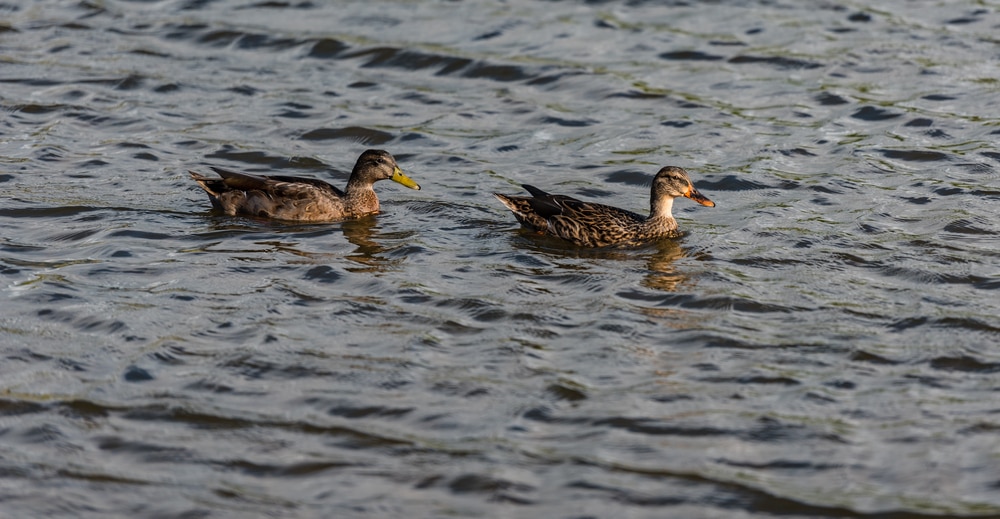
Also known as the Hawaiian duck, the koloa maoli is one of the island state’s oldest bird species as it has been part of the ecosystem for thousands of years. The Hawaiian duck is classified as endangered due to habitat loss and inbreeding with the invasive mallards. Koloa maoli could formerly be found on all the Hawaiian islands except Lanai, and wild populations are still found on Kauai.
The koloa maoli is likely descended from the mallard duck, with males growing up to fifty centimeters (20 inches) in length and females growing up to 43 centimeters (17 inches) in length. Both sexes are usually a mottled brown, with the male koloa maoli having an olive green bill and the female having a dull orange or gray bill. Hawaiian ducks are opportunistic feeders that eat whatever is available, from snails and earthworms to grass seeds, rice, and green algae.
3. Ae’o (Himantopus mexicanus knudseni)
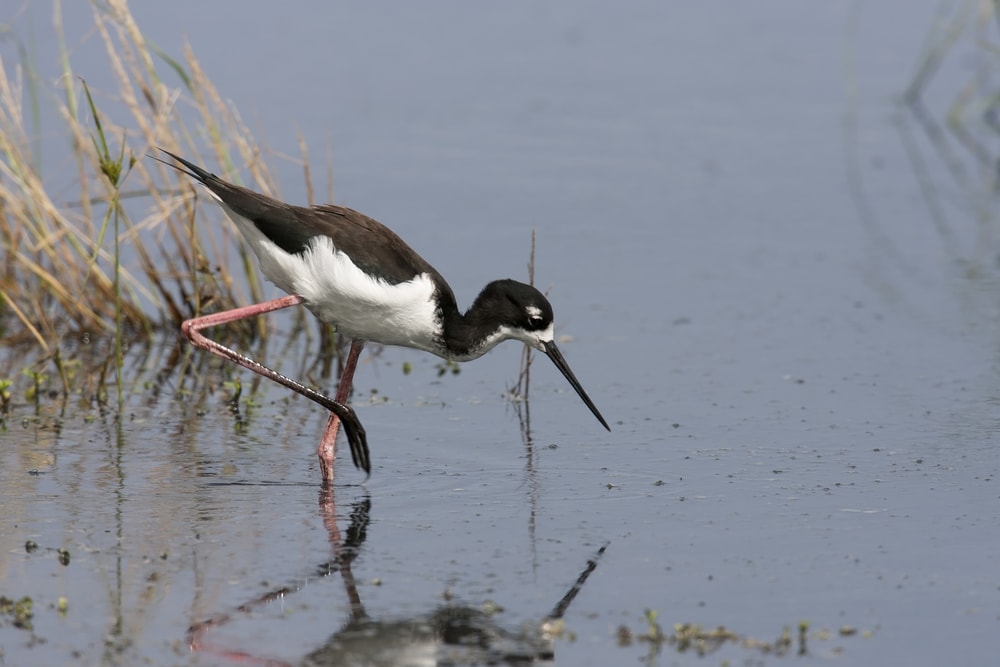
Also known as the Black-necked stilt is easily identified by its delicate, pink legs. The black-necked stilt is found in shallow water and wetlands, historically on all of the main islands except for Lanai and Hawaii. The ae’o is now classified as endangered due to habitat loss, predation, and hunting. Current black-necked stilt populations are most likely to be found on Oahu and Kauai. This species eats beetles, shrimp, crayfish, and small tadpoles and fish.
The ae’o measures up to 39 centimeters (15 inches) in length with a black back and white stomach and can live up to seventeen years.
4. ‘I’iwi (Drepanis coccinea)
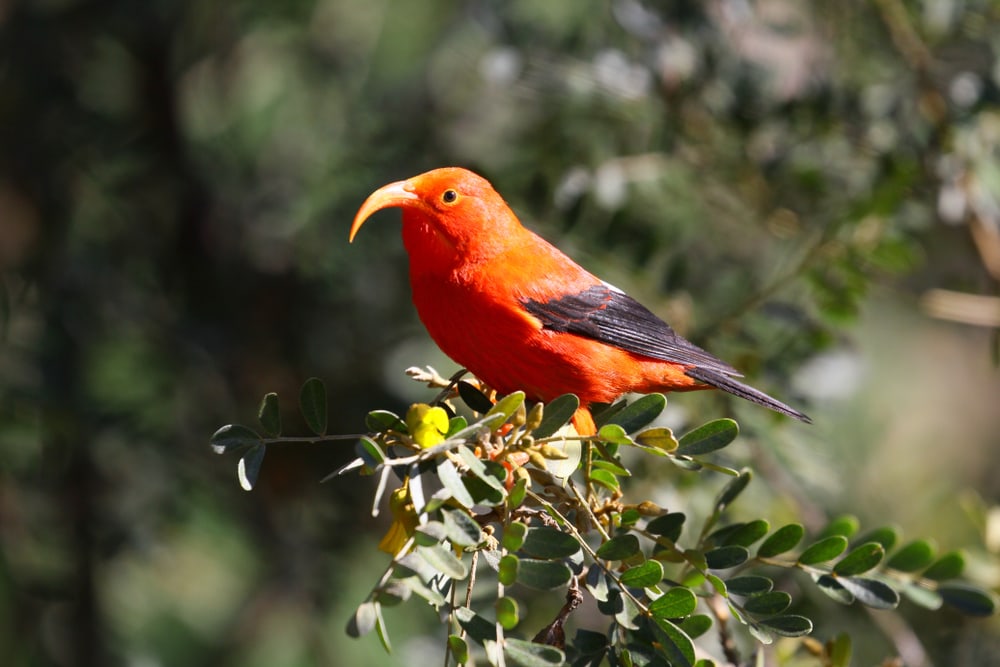
There were at least fifty-six species of Hawaiian honeycreeper, with the scarlet honeycreeper being one of the more recognizable due to its bright red coloration. This family of birds is thought to be descended from the earliest native birds in Hawaii. This bird species is only found above 1200 meters in the native forests on Hawaii, Maui, and Kauai. Scarlet honeycreepers are listed as Threatened under the US Fish and Wildlife Service Endangered Species Act as populations decline due to their susceptibility to avian malaria.
I’iwi eat nectar and grow to be approximately fifteen centimeters (6 inches) in length. Scarlet honeycreepers are monogamous during the breeding season, which lasts from November to June. The lifespan of scarlet honeycreepers in the wild is unknown, but lifespans for similar Hawaiian honeycreepers are five to twelve years.
5. ‘Alala (Corvus hawaiiensis)
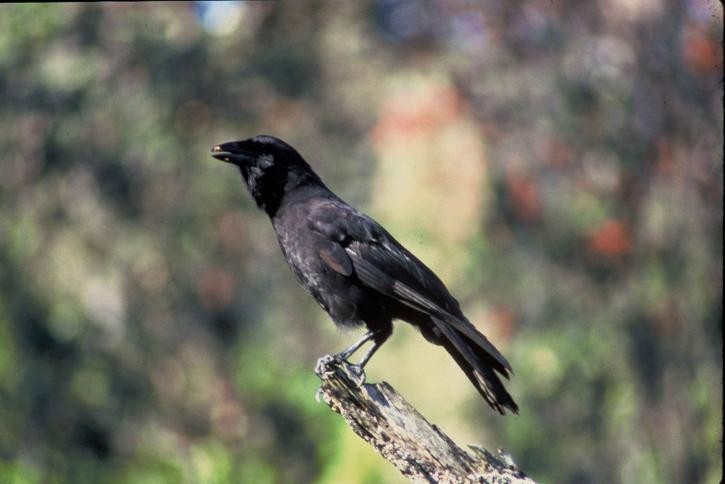
Also known as the Hawaiian Crow, ‘alala are considered to be the world’s most endangered crow species. The Hawaiian crow became extinct in the wild in 2002 due to habitat loss, disease, and predation from introduced mammal species. Under 100 individuals are currently alive in captivity. The US Fish and Wildlife Service is partnering with the State of Hawaii to use captive populations to reintroduce self-sustaining wild populations to restore the ‘alala to the wild.
Hawaiian crows grow up to fifty centimeters (20 inches) in length and are omnivorous, eating fruits, insects, and occasionally mice and other small animals. The breeding season for ‘alala is between March and July, and historically were only found in elevations between 900 and 1800 meters (2,953 to 5,905 feet) on the Big Island.
6. ‘Io (Buteo solitarius)
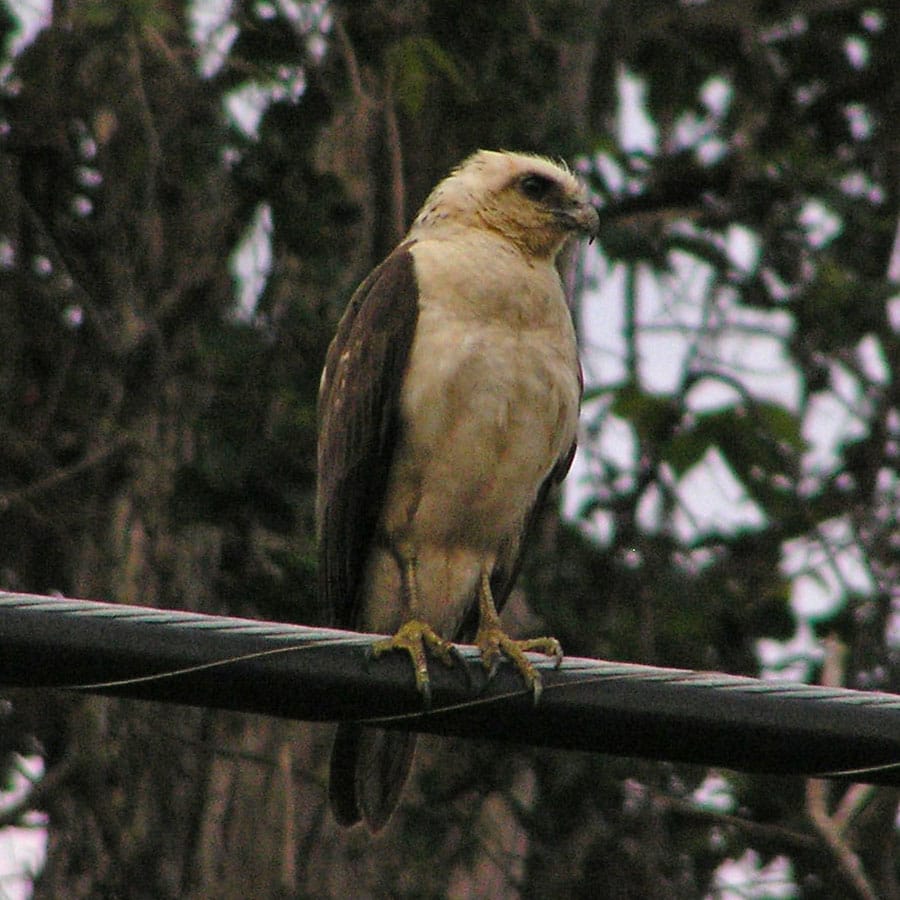
Also called Hawaiian Hawk, the ‘io is the only endemic hawk species in Hawaii. Individuals can have a dark coloration over their whole body or can have a dark head and lighter underside, growing between 40 and 46 centimeters (16 and 18 inches) in length and living up to seventeen years. Like all hawks, ‘io are opportunistic predators and will eat rodents, insects, smaller birds, and more.
The Hawaiian hawks only breed on the Big Island in native forests but can be seen on Maui, Oahu, and Kauai. While ‘io populations are threatened by deforestation and illegal hunting, current populations are estimated to be around 3,000 individuals and their population size has been stable since 1998.
Common Bird Species To See in Hawaii
While not endemic, the following bird species are important to Hawaii’s ecosystems and culture.
7. Common Myna (Acridotheres tristis)
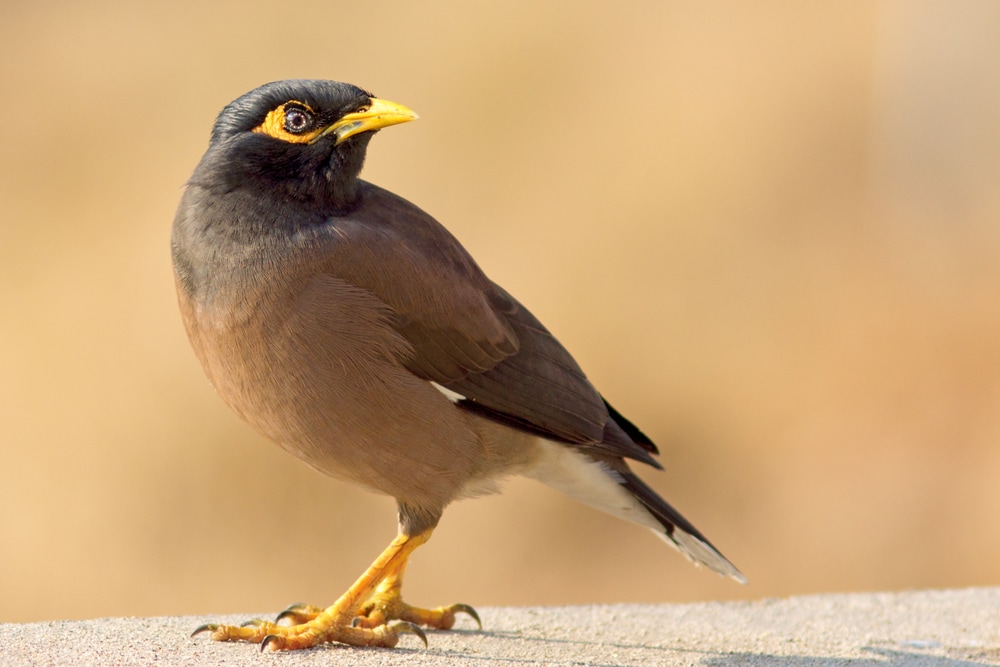
In 1865, the common myna was brought from India to Hawaii to control agricultural pests. Found on all the main Hawaiian islands, mynas are brown with black heads and yellow markings around their eyes. Growing to approximately twenty-two centimeters (9 inches) and length, their average lifespan in the wild is four years.
Common myna do well in urban environments because they are excellent scavengers, making this species one of the most successful invasive bird species in the world. The common myna is considered a nuisance species in Hawaii because it competes with native birds for nesting spots and can adapt to changes more quickly than native species.
8. Red-crested Cardinal (Paroaria coronata)
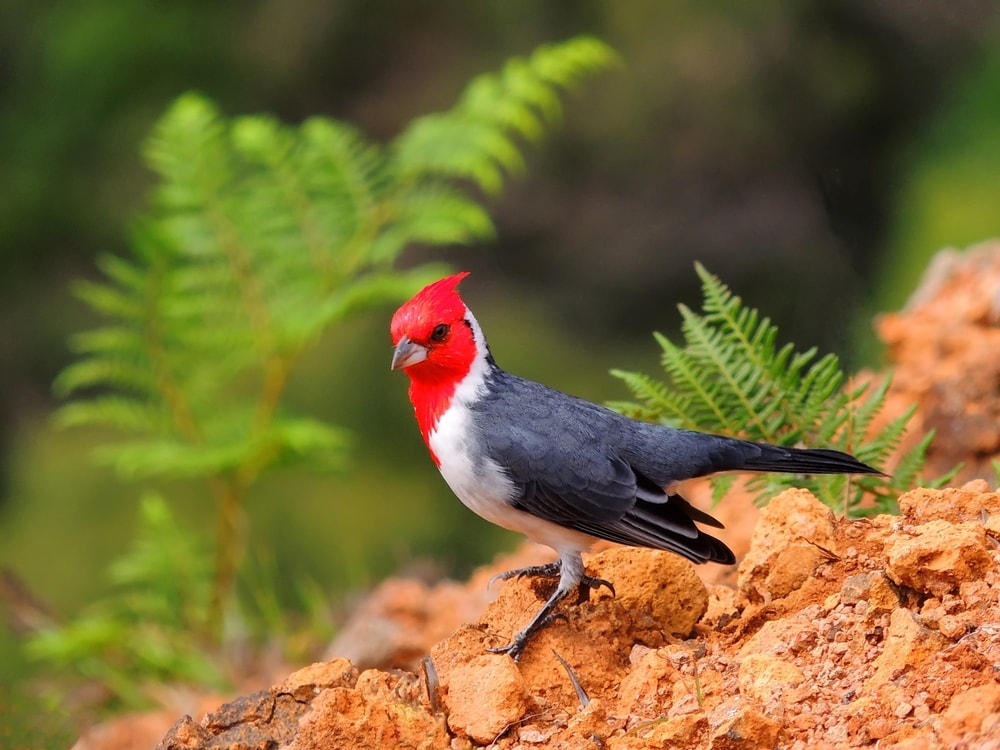
The red-crested cardinal’s name is deceiving, as this bird species isn’t actually related to the cardinal family. Red-crested cardinals were introduced to Oahu in the 1930’s and have since spread to the rest of the main Hawaiian islands. Adults are approximately nineteen centimeters (7.5 inches) long and eat seeds, small insects, and fruit.
9. Northern cardinal (Cardinalis cardinalis)
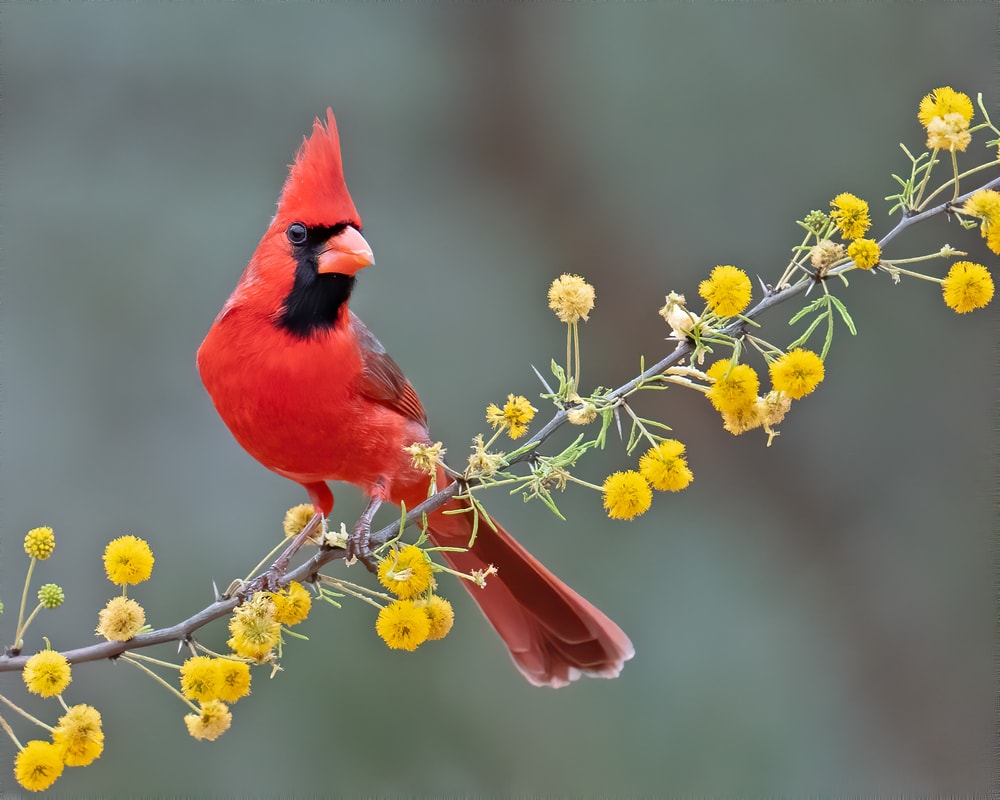
First introduced to Hawaii in 1929, northern cardinals are now found throughout the state. Northern cardinals have a fully red body, which distinguishes them from red-crested cardinals. On average, northern cardinals live for three years in the wild, with some recorded individuals living up to thirteen years. Northern cardinals eat insects, seeds, grasses, berries, and other wild fruit.
10. Japanese white-eye (Zosterops japonicus)
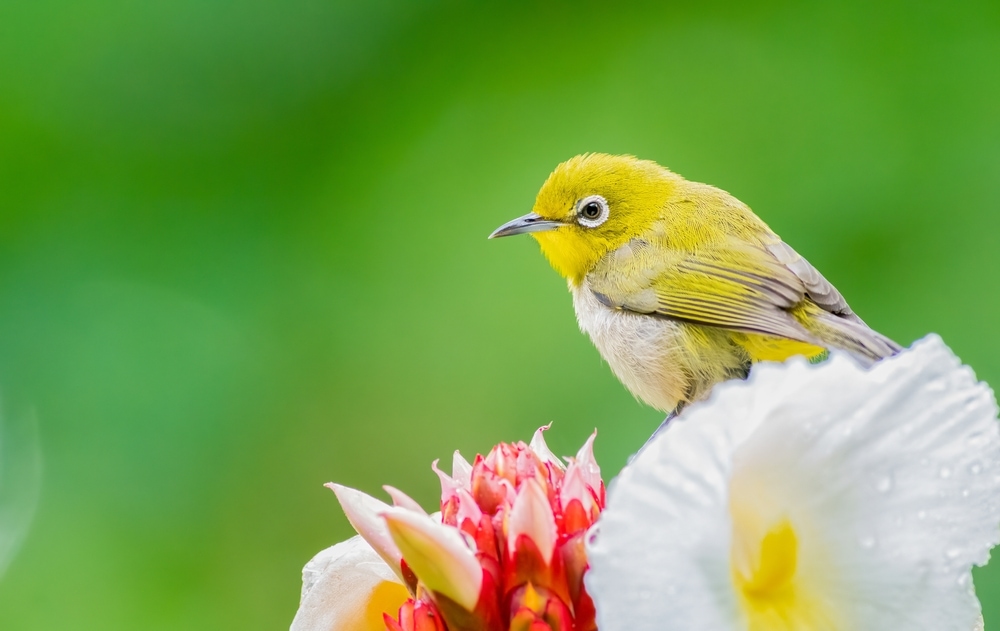
The Japanese white-eye was introduced to Hawaii in 1929 to control insects on plantations throughout the state. A relatively small bird, adults are approximately ten centimeters (4 inches) in length and live around five years in the wild.
The Japanese white-eye is a controversial bird in the Hawaiian ecosystem. Like many introduced species, they adapt well to new environments and begin to compete with native species for resources. However, it’s thought that Japanese white-eyes help disperse native seeds and have become the main pollinator for several threatened plant species endemic to Hawaii.
11. Hawaiian noddy (Anous minutus)
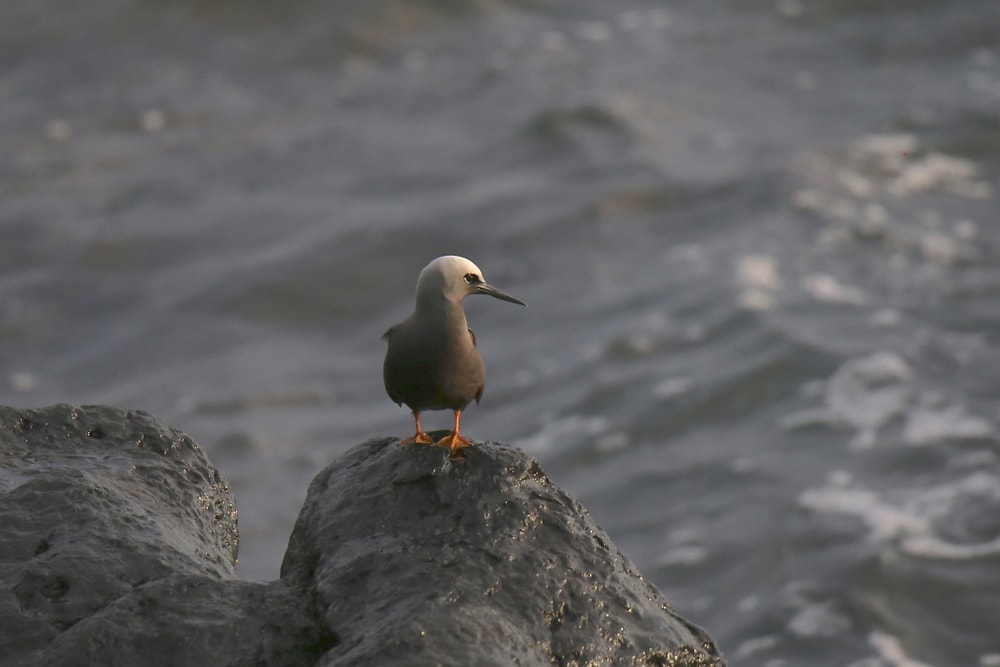
The Hawaiian noddy is a shorebird found along the coastlines of the main Hawaiian islands. Notable for their dark coloration, Hawaiian noddies grow to be thirty to thirty-four centimeters (12 – 14 inches) long and primarily eat small species of fish. Noddies nest together in colonies in coastal caves and rocky ledges across the Hawaiian islands, laying only one egg per year. Noddies mate for life and return to the same nest site each year, which is a common characteristic for shorebirds like terns who are also a member of the Charadriiformes family. The Hawaiian noddy is unique because it isn’t migratory, although most species in the same family are.
12. Brown Noddy (Anous stolidus)
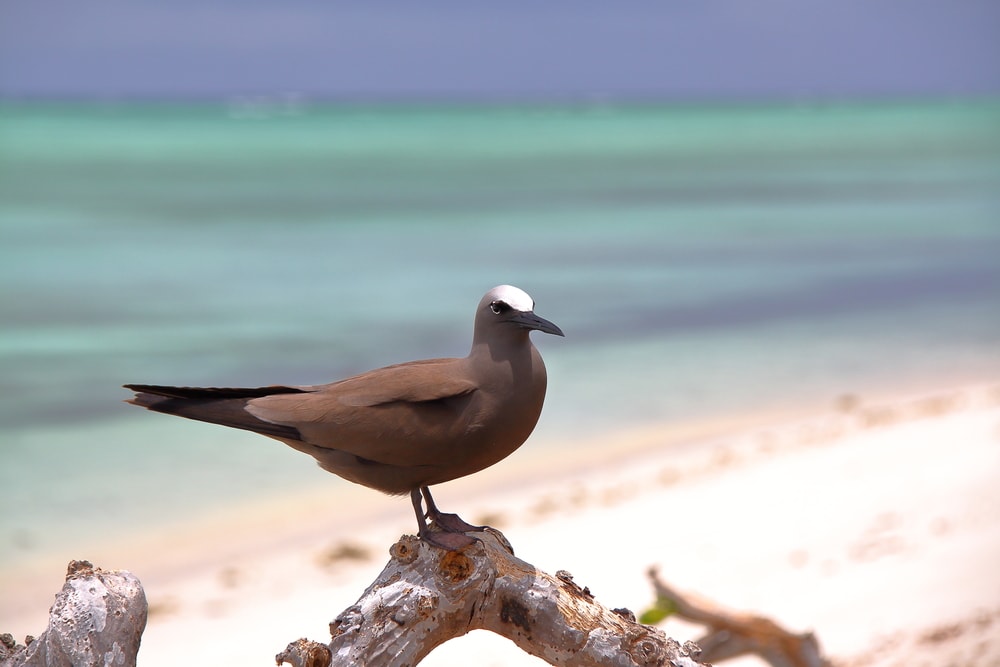
Closely related to the Hawaiian noddy, the brown noddy is a migratory species that is present in Hawaii from May through August. The brown noddy can grow up to forty-five centimeters (2 inches) in length and live up to twenty years. Like most shorebirds, brown noddies mostly eat fish that they catch by dipping into the ocean.
Brown noddies nest in colonies similar to the Hawaiian noddy, but prefer to build their nesting colonies in shrubby areas that provide more cover. Pairs mate for life and engage in extensive courtship behaviors that include bowing, nodding, and presenting fish to their partner.
13. Chestnut Munia (Lonchura atricapilla)
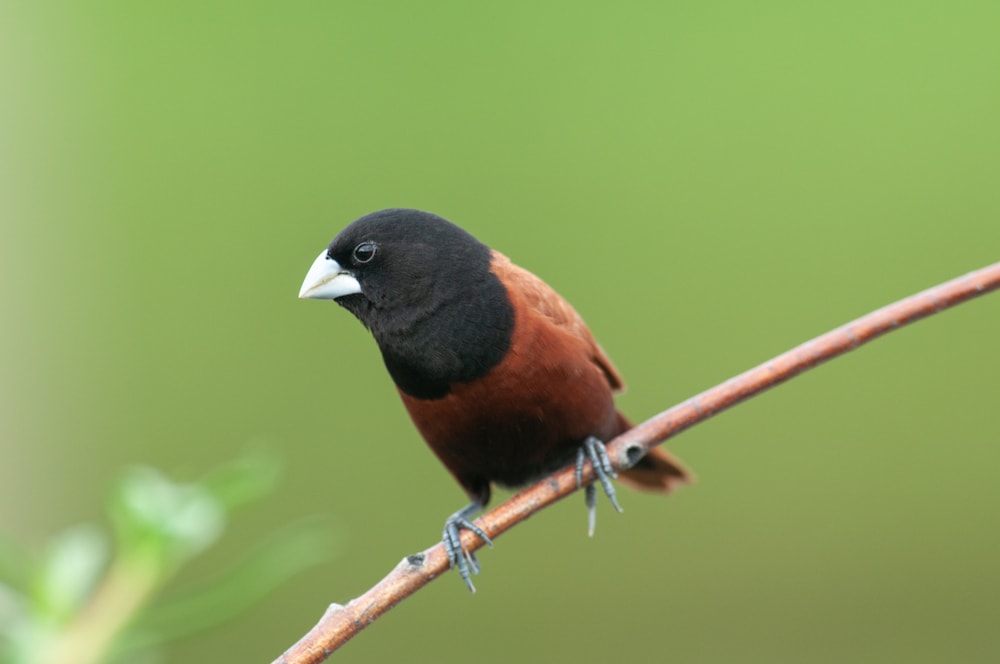
One of many finch species found in Hawaii, the chestnut munia originated in southeast Asia. Adults average twelve centimeters (4.7 inches) in length and feed mainly on grain and other seeds, as their beak shape is adapted for cracking open seeds. Chestnut munia can be found on all the islands of Hawaii.
Breeding occurs from May to November, with nests located in small shrubs and other bush-like vegetation.
14. Scaly-breasted munia (Lonchura punctulata)
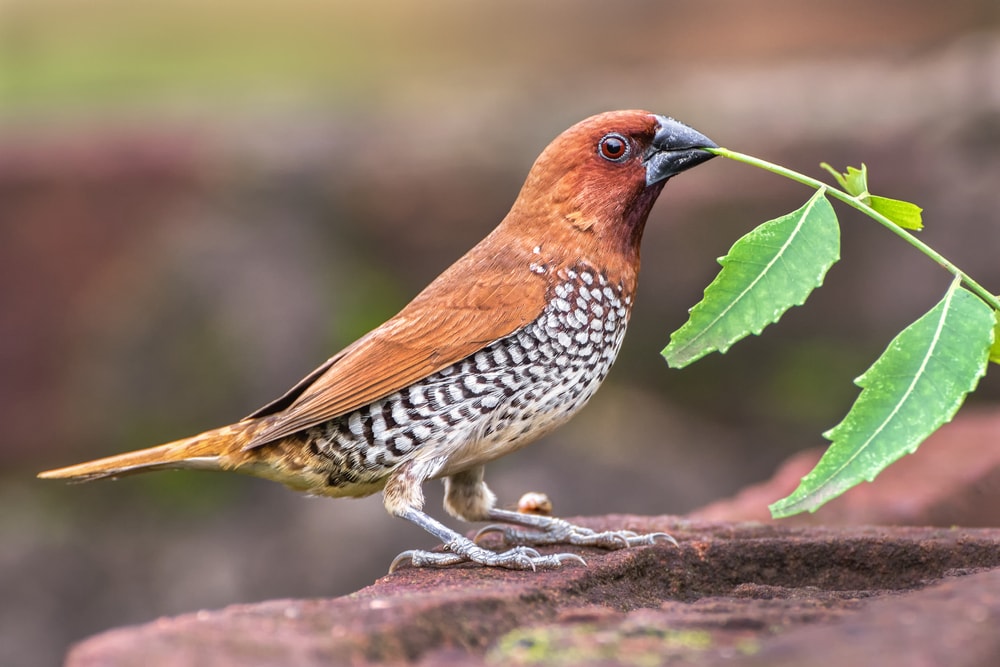
The scaly-breasted munia was first brought to Hawaii in 1866 and is now known locally as the ricebird or nutmeg mannikin. Another finch species, scaly-breasted munia are recognizable for their black beak and brown wings and are variegated underneath. Ricebirds are often found on golf courses, parks, and other open landscapes in both rural and urban Hawaii. Adults are approximately twelve centimeters (4.7 inches) long and their diet mostly consists of grains and seeds.
You May Also Like: Know These Facts About Mongoose In Hawaii That You Should Learn with Photos, Infographics, Facts, and more!
Threats To Hawaii’s Birds Caused By Climate Change
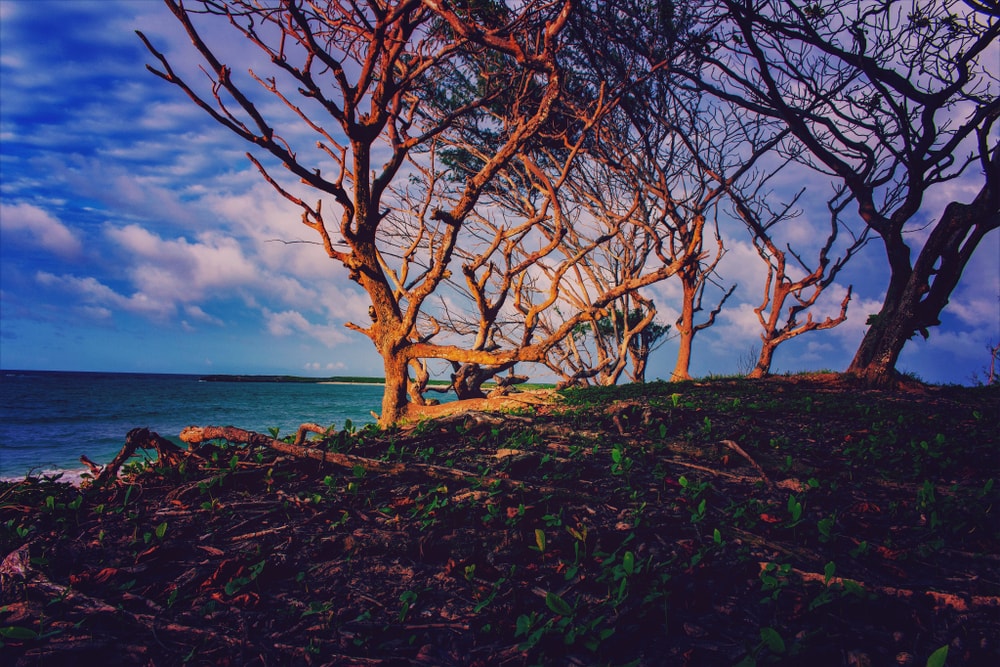
The unique habitats required by Hawaii’s native birds are threatened by climate change. As a string of tropical islands, Hawaii’s ecosystem is very sensitive to change. As temperature, precipitation, and ocean levels change these specialized ecosystems become less resilient and lose some of the ecosystem services required to support native bird species. As the ecosystems change, non-native and invasive bird species become more prevalent because they can more easily adapt to changes.
You May Also Like: Check Out These Birds Of Colorado with Photos, Infographics, Facts, and more!
Cultural Importance of Hawaii’s Birds
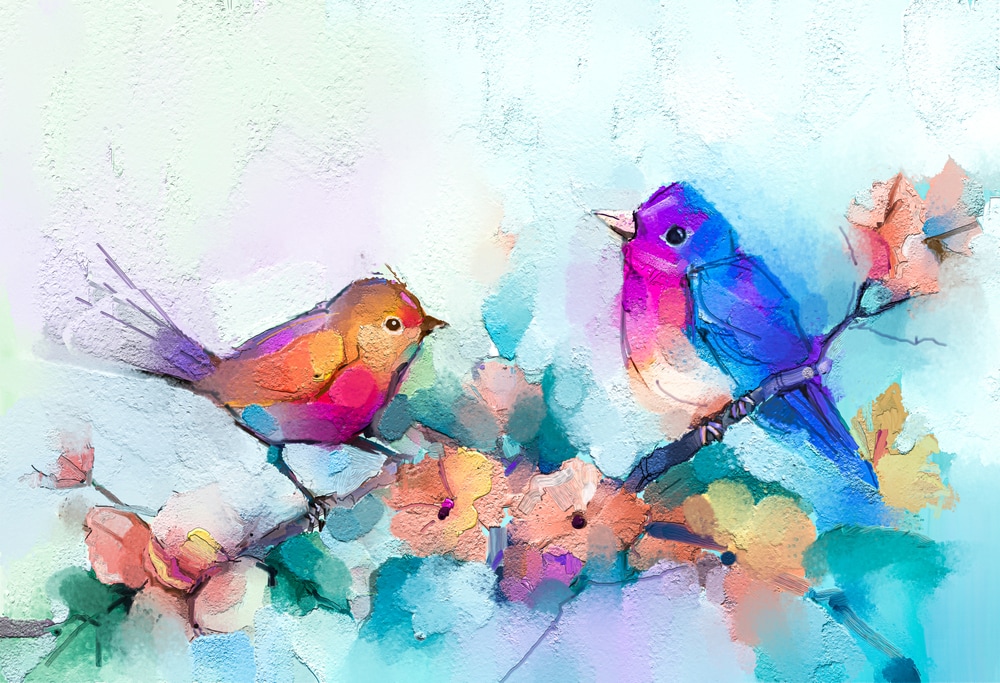
We’ve highlighted a few key Hawaiian bird species, from the official state bird to traditional symbology.
- The nene or Hawaiian goose is the state bird.
- The white tern is the official bird of Honolulu and is unique for being a shorebird that thrives in urban landscapes.
- The Hawaiian hawk was a symbol of royalty. It was also considered a family or personal god by the Polynesian people.
- ‘I’iwi feathers were used by the Polynesian people for traditional dress and other purposes.
You may also like:
Discover the different species found Hawaii here:









